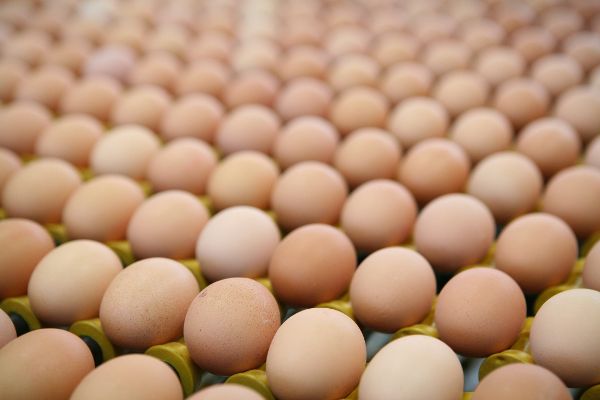Egg production in Austria

Every year, 7.2 million hens (2022) lay around 2.2 billion eggs in Austria, which means that domestic farmers are able to satisfy 94 % of the demand.
Management systems for laying hens
In 2022, the majority of hens raised for laying in Austria was kept in barns (approximately 56 %), followed by laying hens kept in free-range systems (around 31 %) and in organic production systems (around 13 %). The keeping of laying hens in enriched cages has been prohibited in Austria since 1 January 2020.
The table compares the management systems for laying hens used in 2002 in Austria and across the European Union (EU).
| Management system | Austria | EU |
| Laying hens total | Approx. 7.2 million | Approx. 389,335 million |
| Organic systems | 13.2% | 7.1% |
| Kept in free-range system | 31.2% | 15.5% |
| Barn-reared | 56.6% | 37.8% |
| Enriched cages | 0% | 39.7% |
Source: EU Statistics 2023, QGV (Austrian Quality Poultry Association)
The 1st Animal Husbandry Ordinance, Federal Law Gazette II 2004/485, sets out the minimum requirements for animal management, including laying hens.
In Austria, a final end was put to enriched cages at the end of 2019. Austrian farmers that keep laying hens need to meet several criteria in order to enhance animal welfare and sustainability. These include GMO-free feed, the use of Donau Soja, no beak trimming on laying hens, the documentation of animal health via the Poultry Health Data database and egg marking at the farm of production as well as documentation of goods flows and coverage by using the Austrian Egg Database.
In all Member States of the European Union, a standardised mark directly on the eggs has become mandatory, allowing every consumer to fully trace back an egg's origin to the egg farm.
The egg mark explained
| Egg labelling: X-YY-ZZZZZZZ | ||
| X: Figure corresponds to the management system for laying hens |
Y: Letter abbreviation of the producer country | Z: 7-digit registration number of the agricultural holding (LFBIS) |
| 0 = organic management | Examples: AT = Austria | Example: 1234567 |
| 1 = kept in free-range system | DE for Germany | |
| 2 = barn-reared | NL = Netherlands | |
| 3 = kept in cages | FR for France |
The Austrian Egg Database (Österreichische Eierdatenbank)) - which is unique for the EU - was set up to ensure that every single Austrian egg can be traced back to its origin.
The Austrian Egg Database contributes significantly to warranting the quality and daily documentation of the flow of goods, i.e. eggs. As many as 90 % of the fresh eggs available in the market are recorded in this database.
It is a voluntary system, but registration in the Austrian Egg Database is mandatory under the AMA quality label (“AMA Gütesiegel”) programme and when awarding the label "Tierschutz geprüft” (meaning "animal welfare tested").
Consumers can verify the stamp on the egg using the "Quick-Egg-Check". Once the laying hen farmer agrees, not only the type of farming but also the name and address of the laying hen farmer can be queried.
In 2015, around 145,000 consumers seized the opportunity to trace the stamp on the egg; since 2016 approximately 360,000 persons annually have used this instrument around Easter. Since 2017, around 2,000 consumers have used this tool daily.